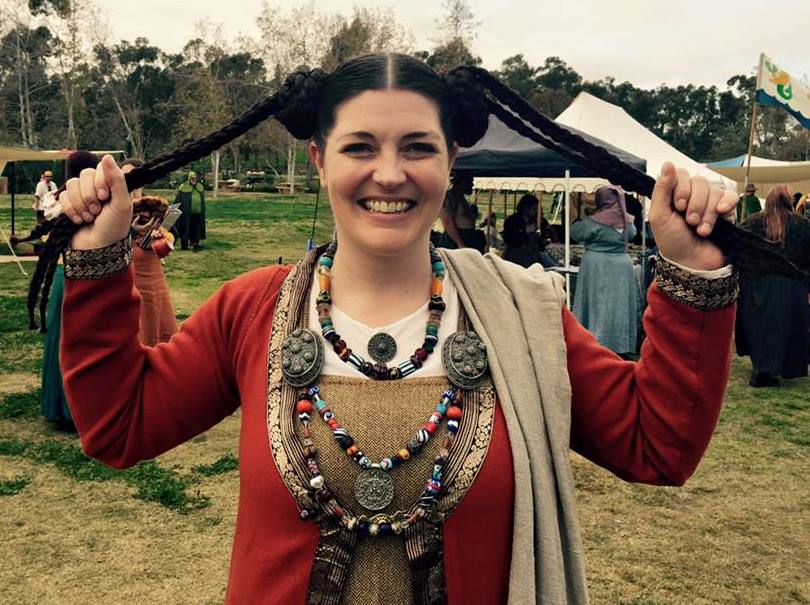The Vikings wore helmets on their head mostly at the time of war in the battle field. And those who were in the soldier and army profession they also used to wear helmets. Otherwise, common people didn’t use helmets and normally keep their heads open uncovered. Some women preferred to cover their head with clothes only. And on the winters, people cover their heads with warm clothes and furs.
The Vikings were a very practical people and their clothes reflected this. Their clothing was designed to keep them warm and dry in the harsh Nordic climate. Vikings wore woolen tunics and trousers, with fur trimmings for extra warmth. They also wore cloaks made from wool or animal skins.
Viking men usually wore their hair long and wore beards. They would often style their hair in braids or topknots. Viking women usually wore their hair loose or in braids. Both men and women would sometimes wear jewellery such as brooches or necklaces.
Vikings liked to decorate their clothes with patterns using dye or embroidery. Wealthier Vikings could afford to have their clothes made from finer materials such as silk.
In addition to metal armor, helmets were a key part of a Viking’s defensive wardrobe. Helmets were made from iron, bronze, or leather and were often decorated with horns or other symbols. In some cases, they were even fitted with chainmail to provide extra protection.
Their boots were made of tough, water-resistant leather, and they carried knives in sheaths at their belts.
Both men and women sometimes wore metal circlets around their heads, or decorated their hair with beads or feathers.
Viking warriors were especially fearsome-looking with their helmets, which were often made of metal and had horns or other decorations on them. Some helmets even had faceguards that covered the entire face except for the eyes.
Viking men and women both wore helmets on their heads when they rode into battle. The most common type of Viking helmet was the spangenhelm, which was made from several metal pieces that were riveted together. Viking helmets often had horns on them, which may have been used to intimidate their enemies.
Some Viking helmets had face guards, which protected the wearer’s eyes from enemy projectiles. Viking warriors also wore chainmail shirts under their tunics to protect themselves from being stabbed or slashed by their opponents’ weapons.
It is widely believed that Viking men and women both wore helmets on their heads during battle. This belief is based on the fact that many Viking artifacts, including helmets, have been found in graves of both sexes. However, there is some debate among scholars as to whether all Vikings wore helmets, or if only certain types of warriors did so.
Some argue that not all Vikings wore helmets because many of the depictions of Viking warriors show them without headgear. It is possible that these images are simply stylized and not meant to be accurate representations of real life. Alternatively, it could be that only certain types of warriors, such as those in the elite Huscarls unit, wore helmets while others did not.
There is also evidence to suggest that some women may have worn helmets in battle. In the sagas, there are several accounts of female warriors who donned armor and fought alongside their male counterparts. While we cannot know for sure if they actually wore helmets, it is certainly possible that they did.
In conclusion, it is likely that both Viking men and women wore helmets during battle, though we cannot say for certain how widespread this practice was.
